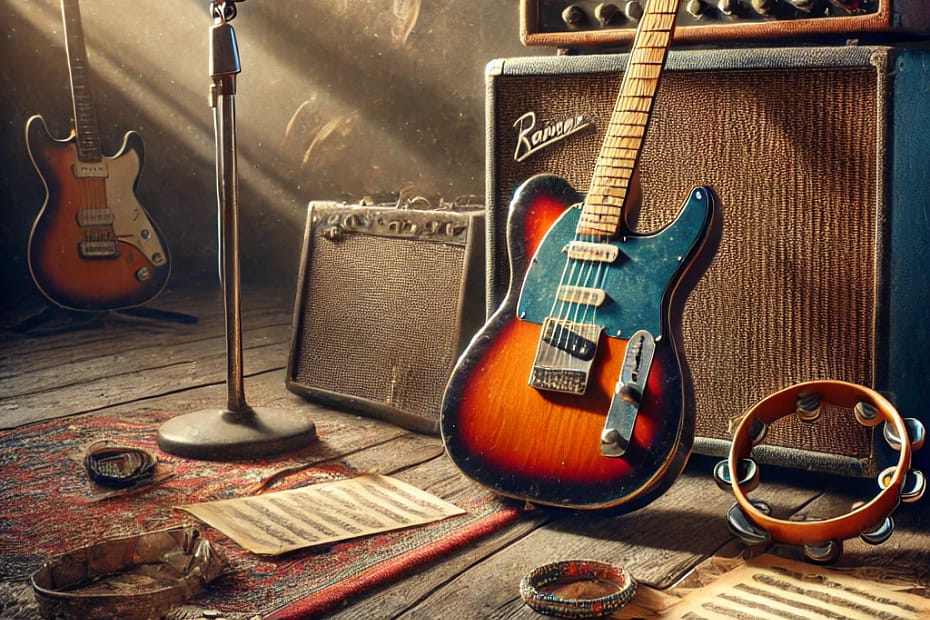By Destyn | 2025
Learning the Fretboard Without the Overwhelm

A good groove isn’t about speed or complexity—it’s about knowing where to sit in the pocket. But if you don’t know your way around the fretboard, that groove can feel out of reach.
I used to feel the same way. Trying to memorize every note on every string felt impossible. But then I found the Grid Shape Method—a way to break the fretboard into small, manageable sections instead of tackling the whole thing at once.
Learning bass isn’t about memorization—it’s about motion. The Grid Shape gets you moving—between sections, between grooves, and into the music—without overthinking.
What Is the Grid Shape?
The Grid Shape is a way of seeing the fretboard in four-fret zones. Instead of worrying about the entire neck, you learn one section at a time—just three strings and four frets.
This means:
✅ Less mental overload – You focus on one area at a time.
✅ Instant mobility – The shape moves anywhere on the neck.
✅ Faster learning – You start recognizing patterns, not just notes.
For example, here’s a Grid Shape on frets 3-6:
G|----3------5----| (G → A)
D|----3------5----| (D → E)
A|----3------5----| (A → B)
E|----------------| (Low E not used yet)
Why the Grid Shape Works
Breaking the fretboard into grids helps you navigate with ease. You don’t have to think about individual notes—you recognize the shape and let your fingers move naturally.
Here’s how the Grid Shape helps:
🎸 Learning notes in chunks – You only focus on four frets at a time.
🎸 Instant groove-building – The notes in one Grid Shape naturally form basslines.
🎸 Seamless movement – Once you know one Grid, shifting to another is easy.
Applying the Grid Shape
Let’s take a real example. Here are the notes in the 3-6 fret section:
| String | 3rd Fret | 4th Fret | 5th Fret | 6th Fret |
|---|---|---|---|---|
| G | G | G# | A | A# |
| D | D | D# | E | F |
| A | A | A# | B | C |
🎧 Try This:
1️⃣ Play up and down this Grid Shape, saying the notes out loud.
2️⃣ Slide it to frets 5-8 and repeat. (Now you’re in a new section!)
3️⃣ Once comfortable, add the Low E string for extra depth.
Grooving With the Grid Shape
Now, let’s turn this into a real bassline. Using this Grid Shape, you can play the foundation of “Stand by Me” (Ben E. King):
G|----------------|----------------|
D|-------3--5-----|-------3--5-----| (D → E)
A|--3--5---------|--3--5---------| (A → B)
E|----------------|----------------|
🎧 Lock in with the groove:
✅ Play it with a drum track at 80 BPM.
✅ Try emphasizing different notes—see how it changes the feel.
✅ Once locked in, shift it up two frets and play the same shape.
Expanding Beyond One Grid
Once you feel comfortable in one Grid Shape, try shifting to another. Here’s how:
1️⃣ Move the entire shape up two frets (Frets 5-8).
2️⃣ Play the same patterns—but listen for the different tonality.
3️⃣ Connect both sections together for fluid movement.
By doing this, you’re no longer locked into one position—you’re learning the neck without overthinking.
🔥 The Groove Shape Jam (Grid Shape Challenge!)
Want to get even groovier? Try this:
🔥 Jam with Two Grid Shapes – Play frets 3-6, then move to 5-8.
🔥 Use Muted Plucks – Lightly touch the strings in between notes for a funkier feel.
🔥 Slide Between Notes – Instead of lifting your fingers, slide between notes for smooth motion.
Groove is about movement—let the shape guide your feel!
Groove Over Memorization
Bass isn’t about memorizing a list of notes—it’s about feeling the neck, recognizing patterns, and locking into the groove. The Grid Shape Method makes that possible without overthinking.
So, the next time you pick up your bass, don’t stress about remembering every note at once. Start small, focus on one Grid, and let your fingers find their way.
Let’s keep grooving. 🎵🔥
By Destyn 🎸

Pingback: 🧠 Welcome to the MySideBRAIN Blog: Where Thinking Meets Action! – MySideBRAIN